Related Research Articles

Ragnar Lodbrok, according to legends, was a Viking hero and a Swedish and Danish king. He is known from Old Norse poetry of the Viking Age, Icelandic sagas, and near-contemporary chronicles. According to traditional literature, Ragnar distinguished himself by conducting many raids against the British Isles and the Holy Roman Empire during the 9th century. He also appears in Norse legends, and according to the legendary sagas Tale of Ragnar's Sons and a Saga about Certain Ancient Kings, Ragnar Lodbrok's father has been given as the legendary king of the Swedes, Sigurd Ring.
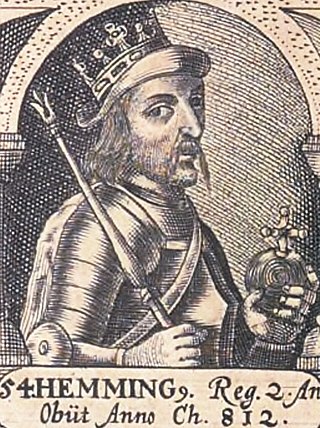
Hemming I was a king in Denmark from 810 until his death. He was the successor of King Gudfred, his uncle.

Gudfred was a ninth century Danish king who reigned from at least 804 to 810. Alternate spellings include Godfred (Danish), Göttrick (German), Gøtrik (Danish), Gudrød (Danish), and Godofredus (Latin). He stands at the threshold of the History of Denmark in the sense that he is the first ruler about whom there is substantial knowledge from contemporary sources. He waged offensive war against the Carolingian Empire with some success, but was murdered under murky circumstances before a major confrontation had taken place. There is no unambiguous trace of Gudfred in the later Norse sagas, and his history can only be traced from the hostile Frankish texts which makes an assessment of his role problematic. His paternity is unknown but he may have been closely related to Sigfred, who preceded him as king of Denmark c. 770–804. He was the uncle of the later Danish King Hemming (810–812) and the father of King Horik I (813–854).
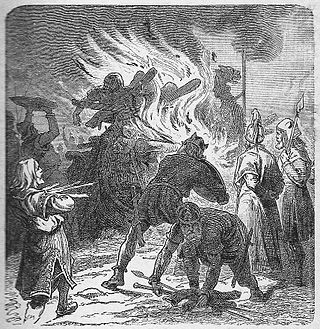
Sigurd Ring according to legend was a king of the Swedes, being mentioned in many old Scandinavian sagas. According to these sources he was granted rulership over Sweden as a vassal king under his uncle Harald Wartooth. Later he would take up arms against his uncle Harald in a bid to overthrow him and take the crown of Denmark, a conflict which Sigurd eventually won after the legendary Battle of the Brávellir, where it is said that Odin himself intervened and killed Harald. In the Sagas, Sigurd is also known for being the father of the Norse Viking hero and legendary king of Denmark and Sweden, Ragnar Lodbrok. According to Bósa saga ok Herrauds, there was once a saga on Sigurd Ring, but this saga is now lost.
Ring was a Swedish monarch or local ruler who ruled at Uppsala, an important early Swedish political center, around or before the year 936. He either ruled before or together with his two sons Eric and Emund. Virtually nothing is known about him beyond his name.

Sigurd Snake-in-the-eye or Sigurd Áslaugsson was a semi-legendary Viking warrior and Danish king active from the mid to late 9th century. According to multiple saga sources and Scandinavian histories from the 12th century and later, he is one of the sons of the legendary Viking Ragnar Lodbrok and Áslaug. His historical prototype might have been the Danish King Sigfred who ruled briefly in the 870s. Norwegian kings' genealogies of the Middle Ages name him as an ancestor of Harald Fairhair and used his mother's supposed ancestry the Völsung to create an ancestry between Harald and his descendants and Odin.

Harthacnut or Cnut I was a semi-legendary King of Denmark. The old Norse story Ragnarssona þáttr makes Harthacnut son of the semi-mythic viking chieftain Sigurd Snake-in-the-Eye, himself one of the sons of the legendary Ragnar Lodbrok. The saga in turn makes Harthacnut the father of the historical king, Gorm. It has been suggested he is to be identified with the Hardegon of Northmannia whose early-10th century conquest of Denmark was related by Adam of Bremen.
Olof was a king who, according to a late source, ruled in Denmark in about 900 after usurping power. Evidence for his historicity is only circumstantial, since he belongs to a period of Danish history when very little is known from textual sources.
Sigurd Hart or Sigurd Hjort was a legendary king of Ringerike, during the late 9th or early 10th centuries. he is mentioned in Ragnarssona þáttr and in Halvdan Svartes saga.
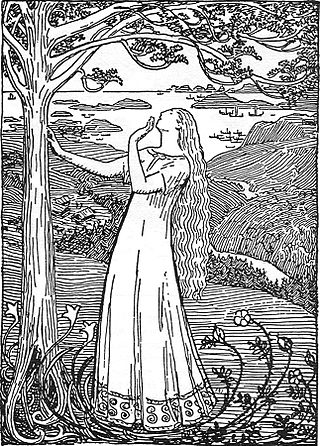
The name Ragnhild Sigurdsdotter may refer to two different figures from Old Norse literature, an amalgam of them, or a purely fictitious figure.
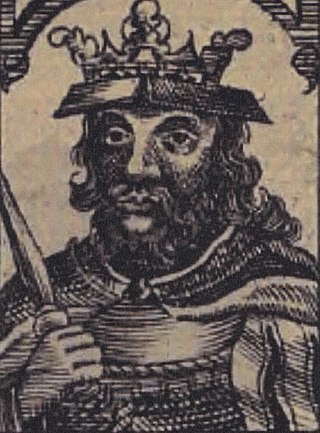
Sigfred was an eighth century Danish king who is known to have reigned from before 777 to after 798. Fragments of his reign can be traced via Frankish sources.

Horik I or Hårik was a king of the Danes. He was co-ruler from 813, and sole king from c. 828 until his violent death in 854. His long and eventful reign was marked by Danish raids on the Carolingian Empire of Louis the Pious, son and successor of Charlemagne.

Horik II, also known as Hårik or, in late sources, Erik Barn, was King of the Danes from the fall of Horik I in 854 to an unknown date between 864 and 873. During his reign the Danish kingdom showed tendencies of breaking up. After his demise under unknown circumstances, Denmark entered a long period of obscurity, until the rise of the Jelling dynasty in the 10th century.
In Ragnarssona þáttr, Helgi the Sharp, prince of Ringerike was a grandson of king Ring II of Ringerike and the brother of Guðrøðr, the king of Ringerike and they lived in the 9th century.
The Tale of Ragnar Lodbrok is an Icelandic legendary saga of the 13th century about the Viking ruler Ragnar Lodbrok. It is part of the manuscript of the Völsunga saga, which it immediately follows. The tale covers the origin of Aslaug, Ragnar's quest for the hand of Þóra Borgarhjǫrtr, his later marriage to Aslaug, the deeds of their sons in battle, and Ragnar's death at the hands of king Ælla of Northumbria.
Sigfred and Halfdan were two brothers who figured as Kings of the Danes in 873. Little is known about them; they are the last Danish rulers recorded by contemporary sources before the 930s.

Sigfred was a competitor for the Danish throne in 812. His brief appearance inaugurated a period of throne struggles in Denmark which lasted until 827.
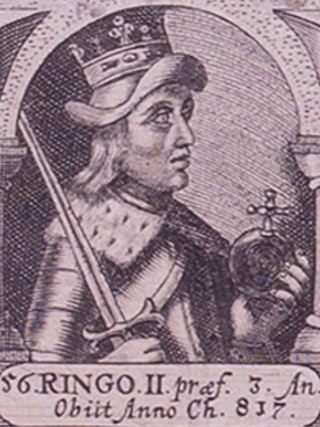
Anulo or Ale was a pretender-king who vied for the Danish throne in 812. He represents the appearance of the House of Harald which competed with the House of Gudfred for power in Denmark until c. 857 and possibly longer.
References
- ↑ Kim Hjardar & Vegard Vike (2012), Vikingar i krig. Stockholm: Bonniers, p. 325-6.
- ↑ Vilhelm la Cour (1980), "Halvdan", Dansk Biografisk Leksikon, Vol. 5. Copenhagen: Gyldendal, p. 505-6.
- ↑ Adam av Bremen (1984), Historien om Hamburgstiftet och dess biskopar. Stockholm: Proprius, p. 34-55 (Book I, Chapter 48).
- ↑ The Tale of Ragnar's Sons
- ↑ The Tale of Ragnar's Sons